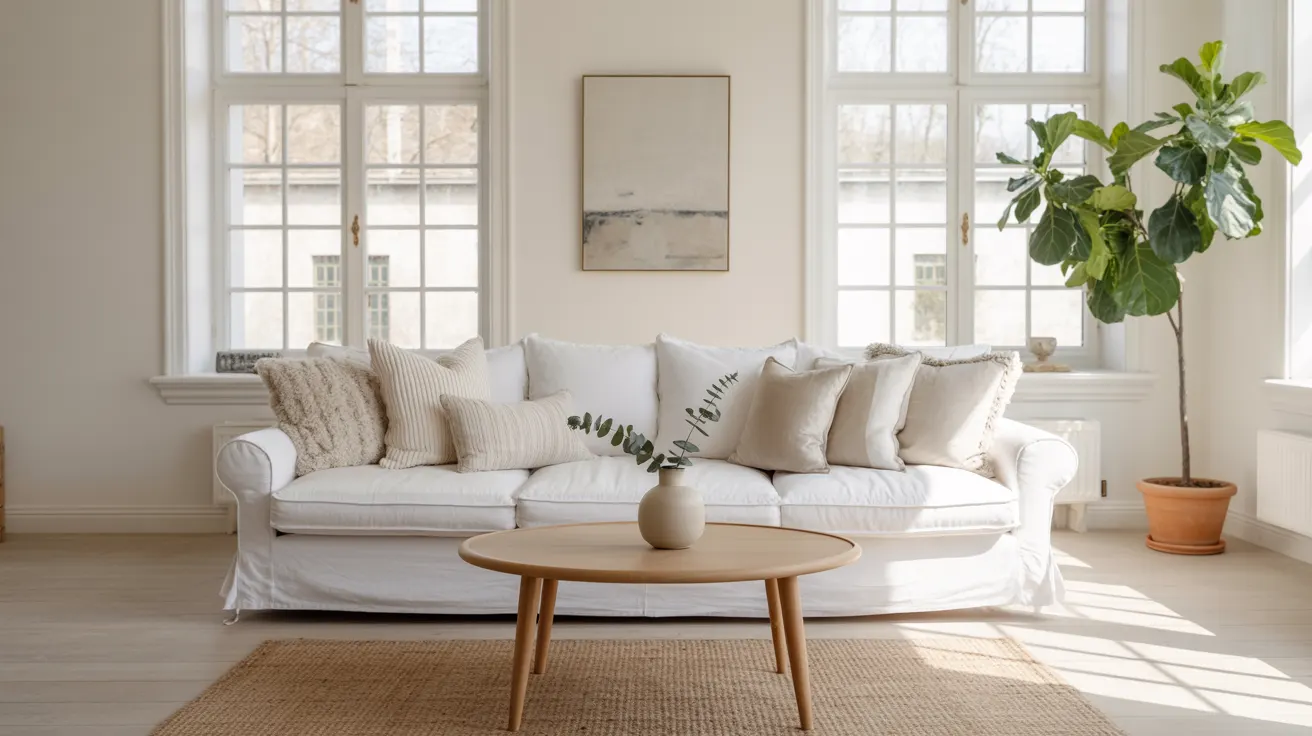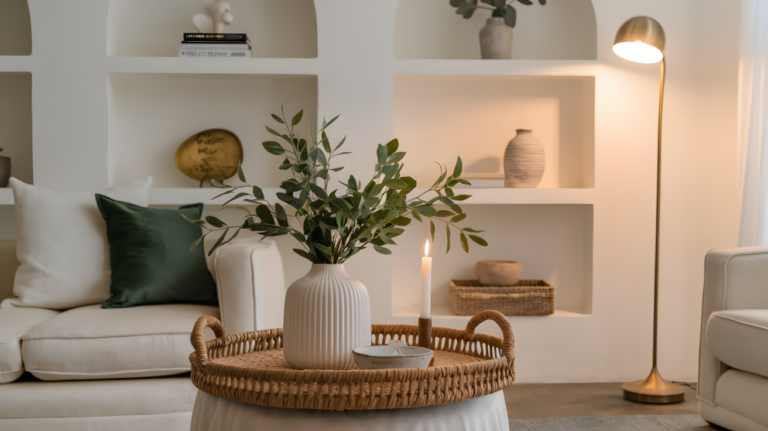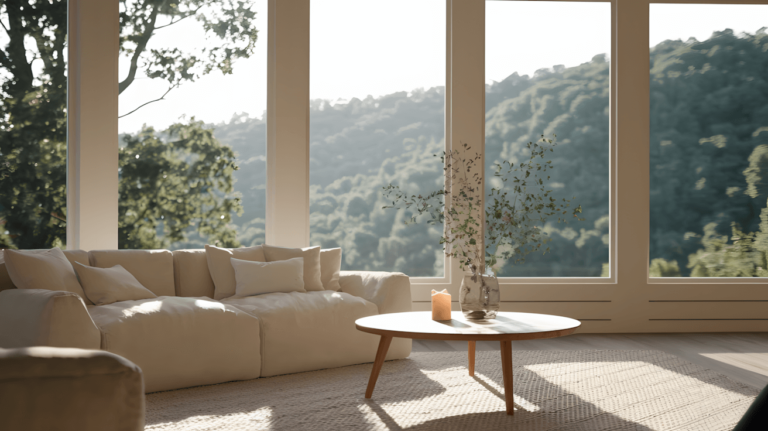If you’ve been anywhere near Pinterest in the last few years, you’ve probably fallen down the Scandinavian design rabbit hole at least once. And honestly? I don’t blame you. There’s something irresistible about those clean lines, that cozy minimalism, and the way Scandi spaces somehow look both impossibly pristine and totally livable.
I’ve spent years obsessing over Scandinavian interiors (my phone’s photo roll is basically a shrine to white walls and light wood), and I’m here to spill all the secrets behind those gorgeous Scandi living rooms that make you want to throw out everything you own and start fresh.
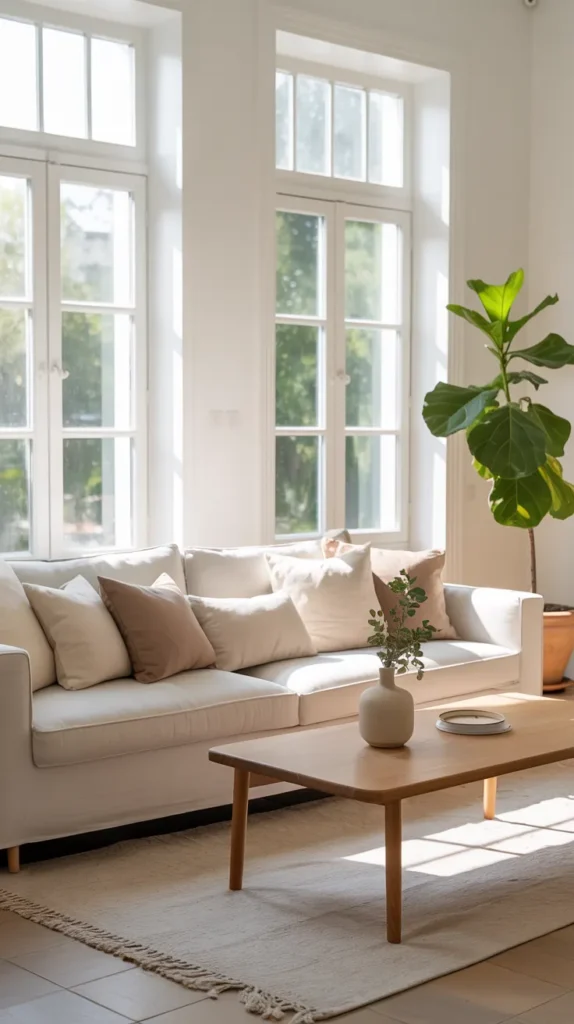
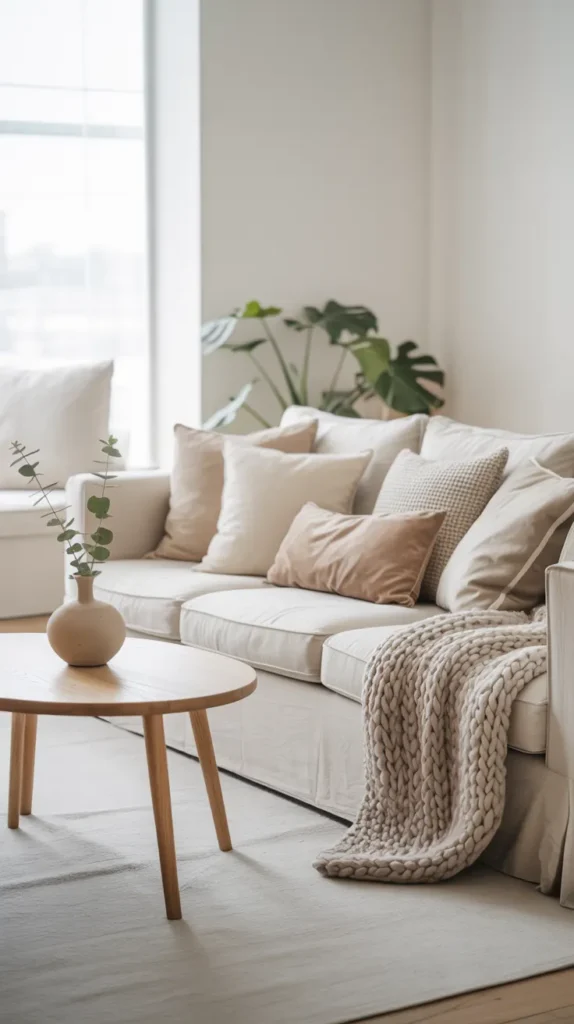
What Makes a Living Room “Scandi” Anyway?
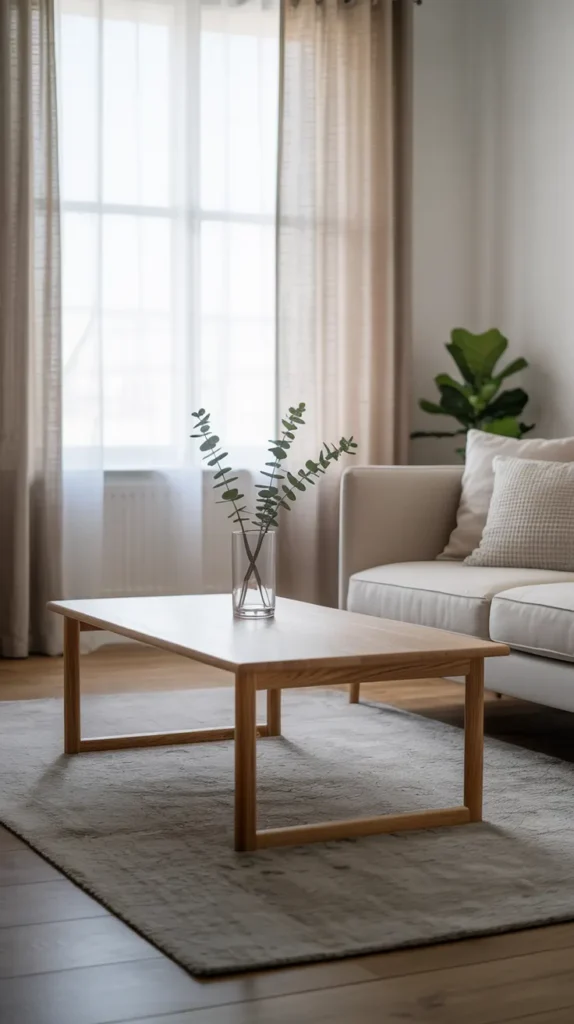
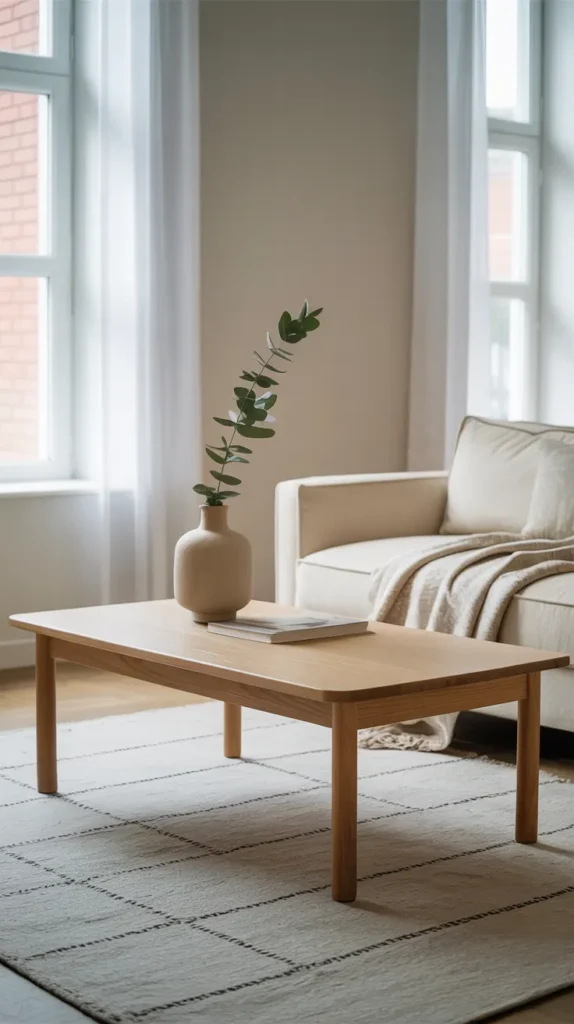
Before we dive into the good stuff, let’s get one thing straight—Scandinavian design isn’t just “throw some white paint on the walls and buy an IKEA sofa.” It’s a whole philosophy built around simplicity, functionality, and connection to nature. The Scandinavians have mastered the art of creating spaces that feel both minimal and incredibly warm—no small feat when you consider they spend half the year in darkness!
The Neutral Color Palette: Fifty Shades of White (And Gray… And Beige…)
Let’s talk about the foundation of any Scandi living room: that gloriously restrained color palette.
Scandi spaces embrace whites, creams, light grays, and soft beiges like they’re going out of style (spoiler alert: they’re not). These neutral tones aren’t just aesthetically pleasing—they’re strategic. When you live somewhere that’s dark for months on end, you want your interiors to capture and amplify every precious ray of sunlight.
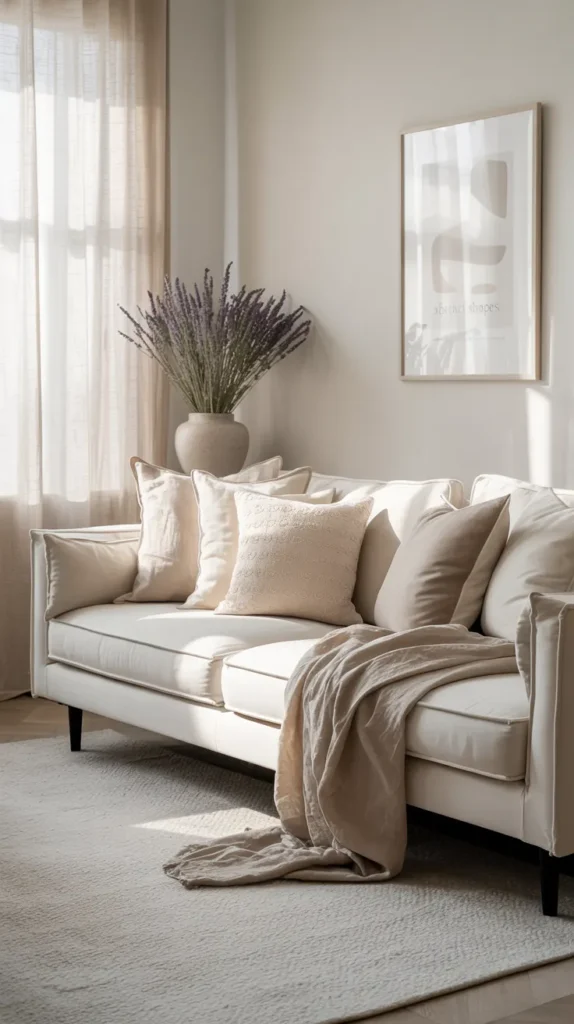
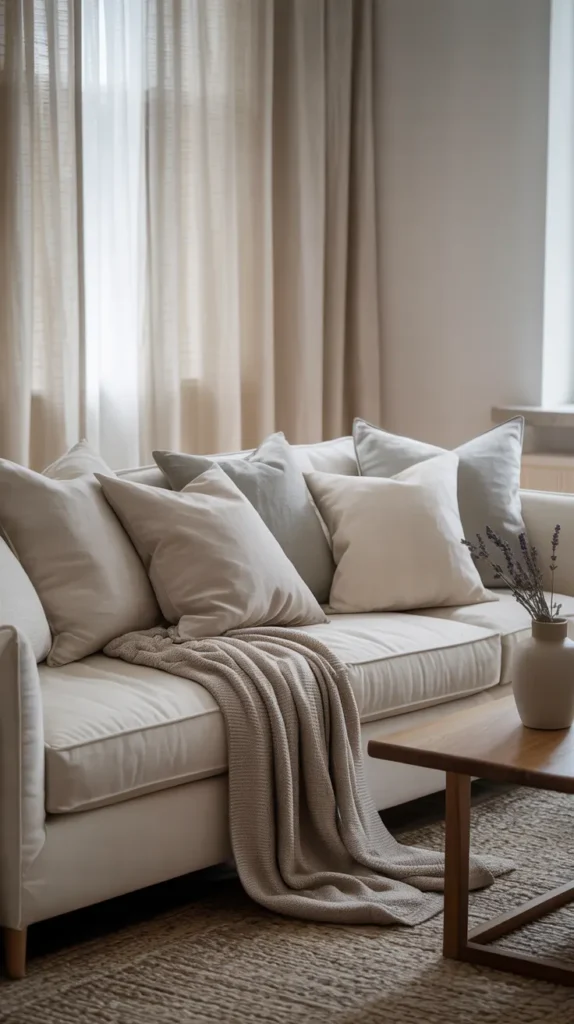
But here’s where people get it wrong—Scandi neutral doesn’t mean boring. The magic happens in the layering of different tones and textures. A creamy white sofa against slightly cooler white walls, topped with linen cushions in various shades of oatmeal? That’s not boring—that’s sophisticated.
Pro tip: Add depth to your neutral palette with subtle accent colors drawn from nature—think soft sage green, pale sky blue, or dusty rose. Just keep them muted—we’re going for whispers of color, not shouts.
Let There Be (Natural) Light: The Scandi Obsession
If there’s one thing Scandinavians don’t mess around with, it’s lighting. When you spend much of the year in darkness, you learn to maximize every sunbeam that graces your home.
In a true Scandi living room, windows are often left completely bare or dressed with the sheerest of curtains. It’s like they’re saying, “Nothing comes between me and my precious daylight.” Large mirrors are strategically placed to bounce light around the room, and light-colored flooring helps reflect rather than absorb the sunshine.
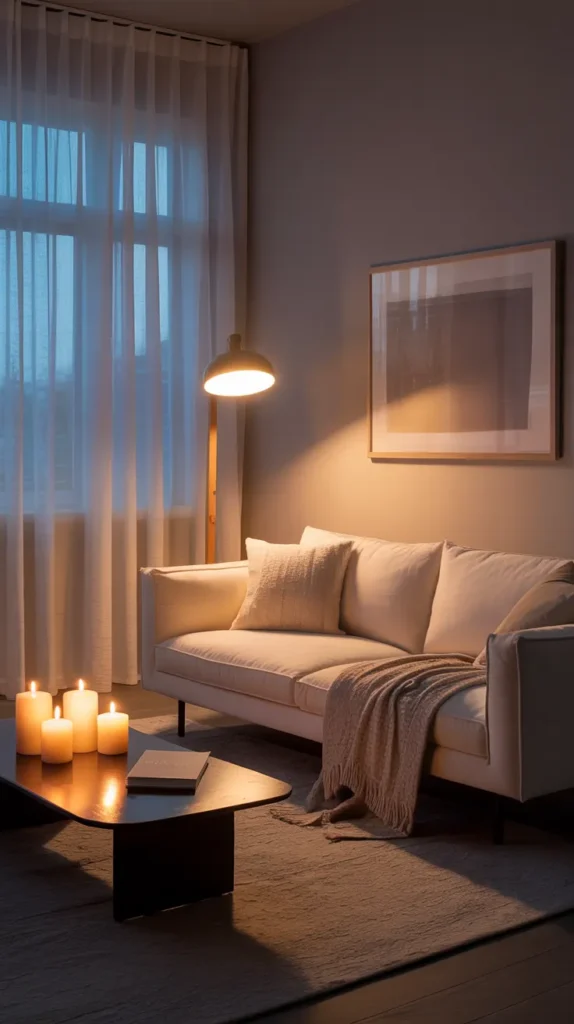
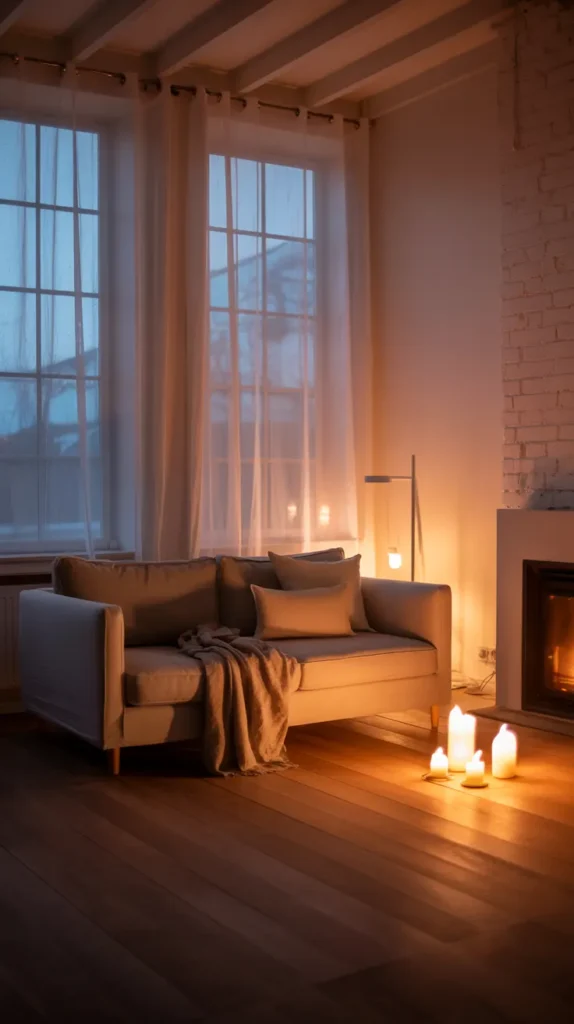
But what about those long, dark Nordic winters? That’s where the layered lighting comes in. Scandinavians are masters of mood lighting, with carefully placed floor lamps, table lamps, and candles creating pools of warm light throughout the space. No harsh overhead lighting here—just a warm, inviting glow that makes you want to curl up with a book and never leave.
Bold opinion: Ditch your overhead light. Seriously. If you want that authentic Scandi vibe, table and floor lamps are your best friends. Overhead lighting should be used as infrequently as your dusty exercise equipment.
Functional Furniture: Where Form Meets Purpose
One of the biggest Scandi design principles is functionality. Every piece in the room should earn its keep—no useless decorative items cluttering up your zen space.
Scandinavian furniture features clean lines, organic shapes, and not an ounce of unnecessary ornamentation. Think solid wood frames, tapered legs, and upholstery in natural fabrics. These pieces are designed to last generations, not just until next season’s trends roll in.
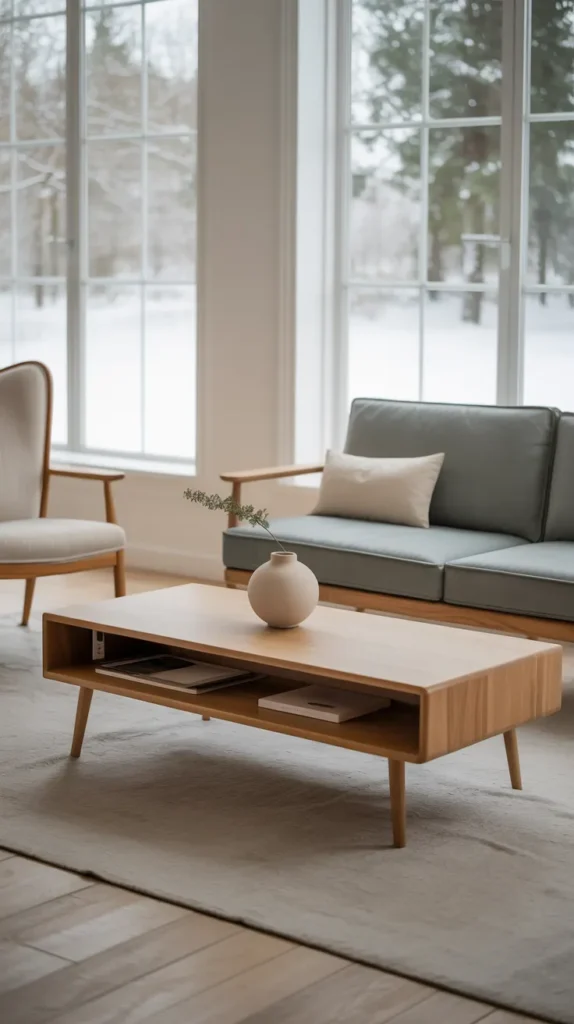
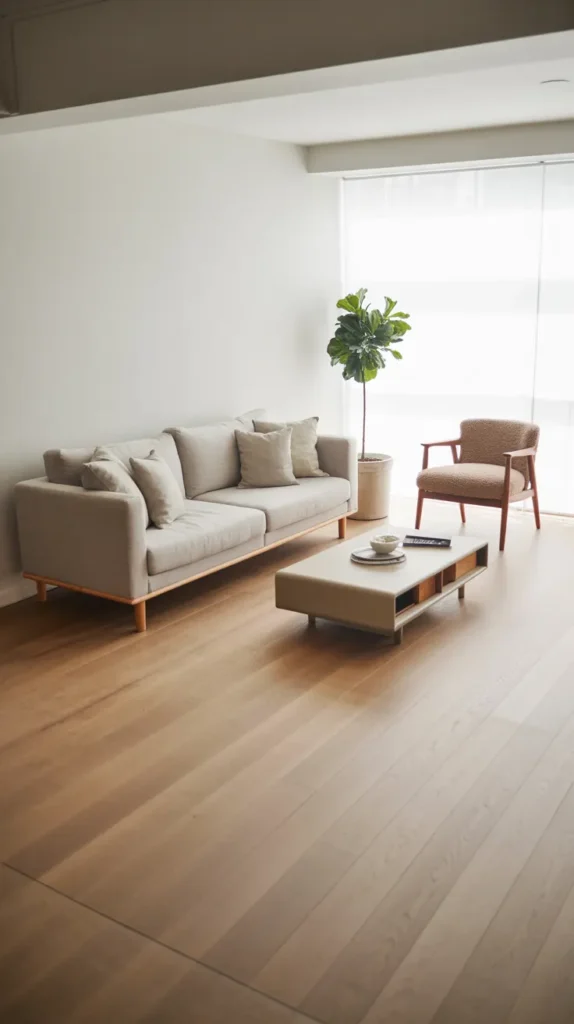
What I love most about Scandi furniture is how incredibly comfortable it is despite its sleek appearance. Those minimalist sofas? Deep enough to sink into after a long day. Those simple wooden chairs? Ergonomically designed to support your body. Form follows function always, but never at the expense of comfort.
Look for multi-purpose pieces that work double-duty in smaller spaces—coffee tables with hidden storage, sofas that convert to guest beds, or nesting tables that can be separated when you have friends over.
Natural Materials: Bringing the Outdoors In
In Scandinavian countries, there’s a deep connection to nature that translates directly into their interior design. Natural materials aren’t just aesthetic choices—they’re cultural ones.
Wood is the undisputed star of any Scandi space, particularly light varieties like pine, ash, and oak. You’ll find it in flooring, furniture, ceiling beams, and decorative objects. The warm tones and visible grain patterns add instant coziness to the otherwise crisp palette.
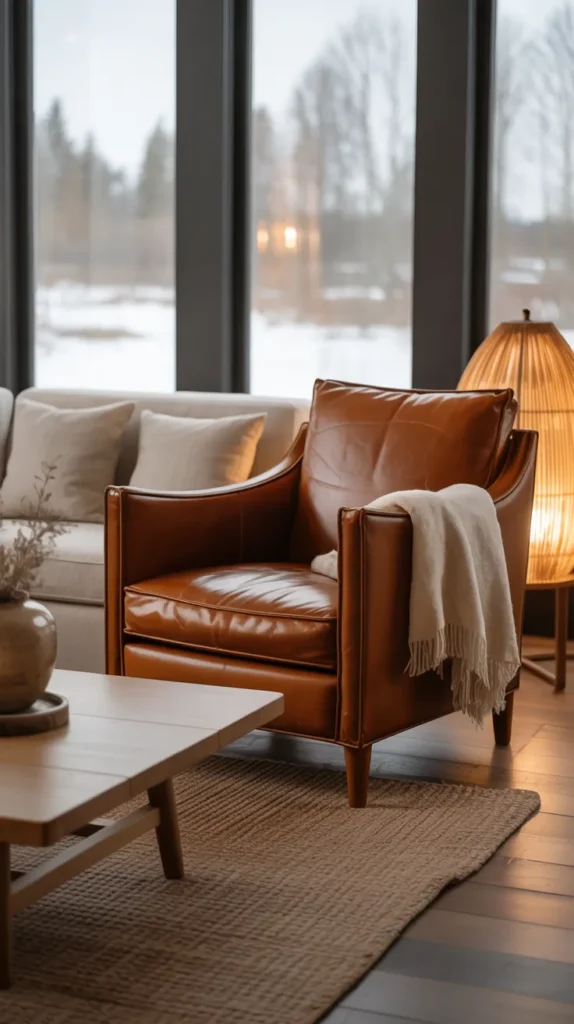
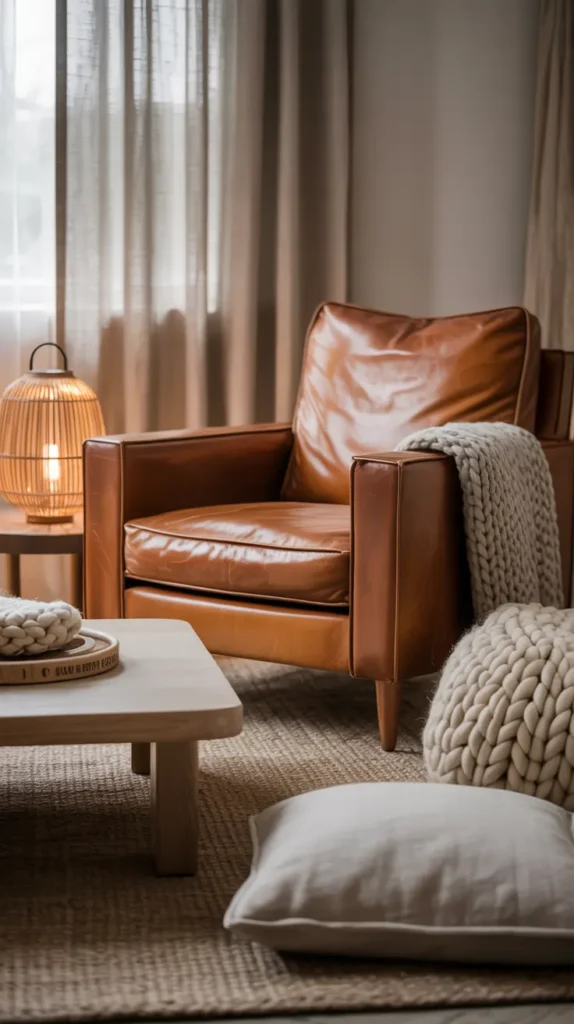
Beyond wood, you’ll see plenty of other natural materials:
- Leather ages beautifully and adds a rich patina over time
- Wool provides warmth in textiles like throws and rugs
- Linen offers beautiful texture in curtains and cushions
- Rattan and jute bring in interesting visual texture through lighting and accessories
What you won’t find? Lots of shiny, artificial surfaces or synthetic materials. Authenticity reigns supreme in Scandi design.
Minimalist Decor: The Art of Keeping It Simple
Here’s where Scandinavian design really separates itself from other styles—the commitment to minimalism. While American homes often feel like showrooms for our possessions, Scandi interiors embrace empty space as a design element in itself.
This doesn’t mean these spaces feel sparse or unlived-in. Rather, each item is carefully chosen for both beauty and function. Instead of fifteen mediocre decorative objects, you might see just three exceptional pieces—perhaps a sculptural vase, a striking art print, and a beautiful design book.
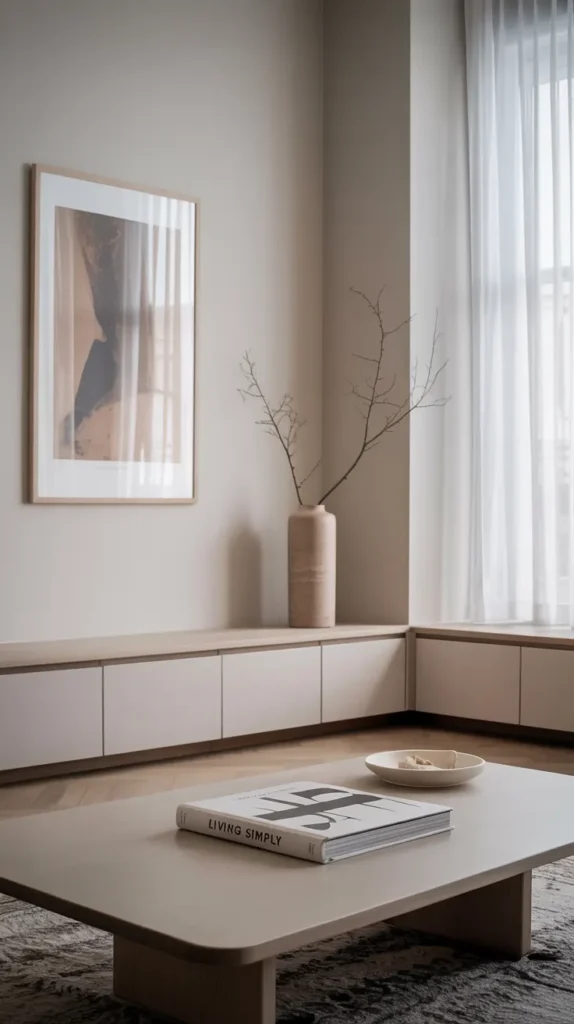
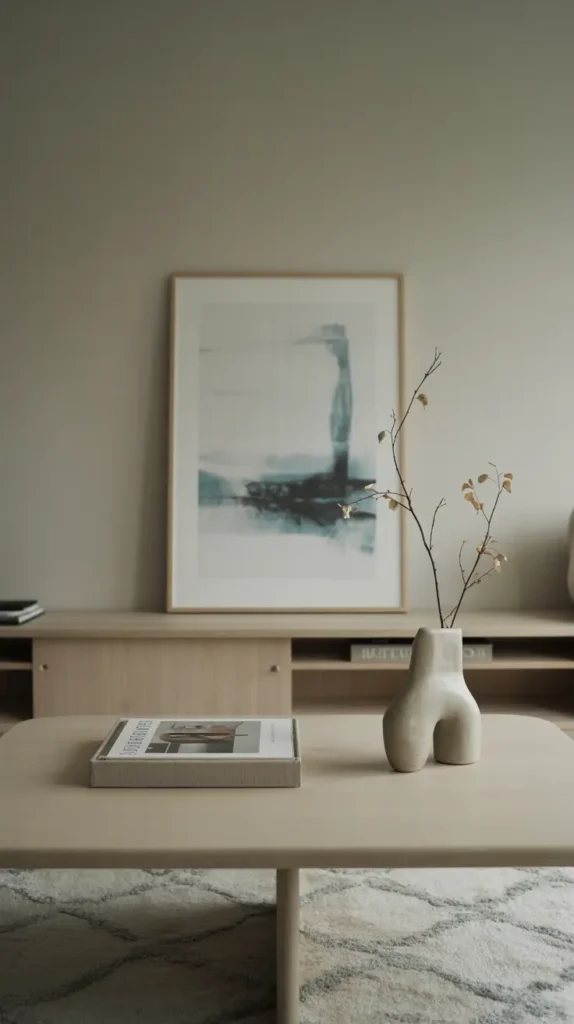
The mantra here is quality over quantity. Save up for pieces you truly love rather than filling your space with quick fixes. And when it comes to displaying your treasures, think curation rather than collection—give each piece room to breathe.
Truth bomb: The secret to those impossibly tidy Scandi living rooms you see online? Ruthless editing and excellent storage solutions. If you’re not ready to part with your stuff, this style might be a challenge.
Cozy Textiles: The Hygge Factor
If Scandinavian design were only about minimalism and neutral colors, these spaces might feel cold and unwelcoming. What saves them is the liberal use of soft, cozy textiles—the physical embodiment of hygge (that Danish concept of ultimate coziness).
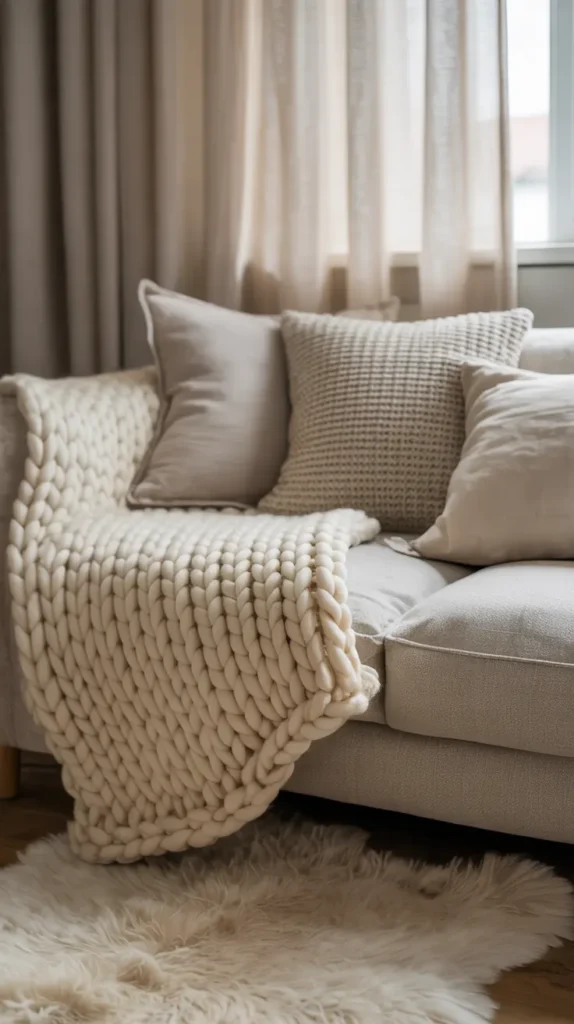
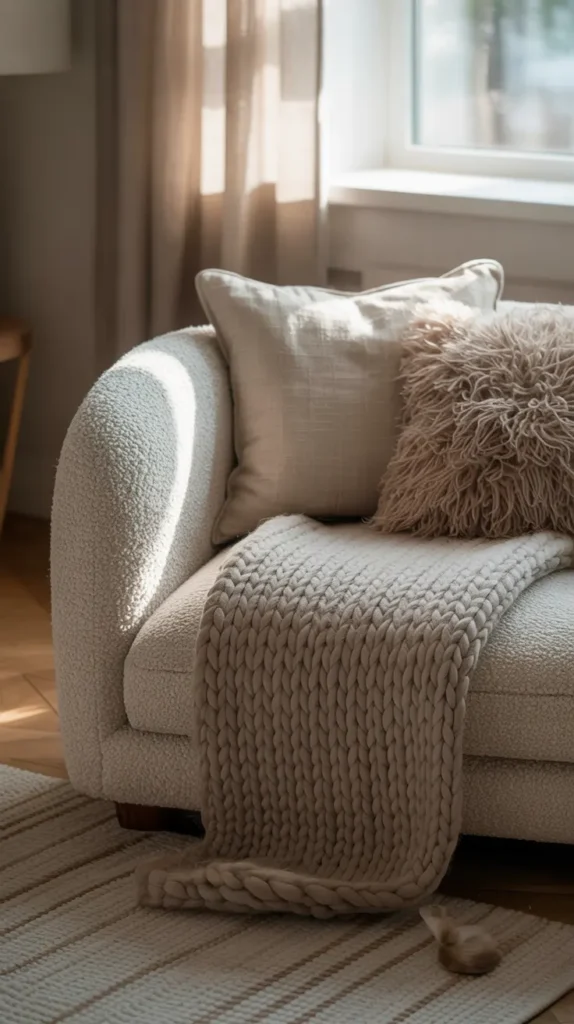
Layers are key here. A Scandi living room isn’t complete without:
- A chunky knit or wool throw draped casually over the sofa arm
- Multiple cushions in varying textures (linen, wool, cotton) but complementary colors
- A supremely soft rug underfoot—often sheepskin or a flat-woven wool design
- Window treatments in natural, lightweight fabrics
These textiles add crucial warmth, both literally and visually. They soften the clean lines of the furniture and add tactile comfort that invites you to stay awhile.
Greenery: Life in a Minimalist Space
Plants are non-negotiable in Scandinavian interiors. They bring literal life and energy to these streamlined spaces, not to mention adding natural color to the neutral backdrop.
Scandi plant styling tends toward the architectural—think fiddle leaf figs, rubber plants, or monstera with their dramatic leaves. These statement plants are often displayed in simple ceramic pots or woven baskets, becoming living sculptures within the space.
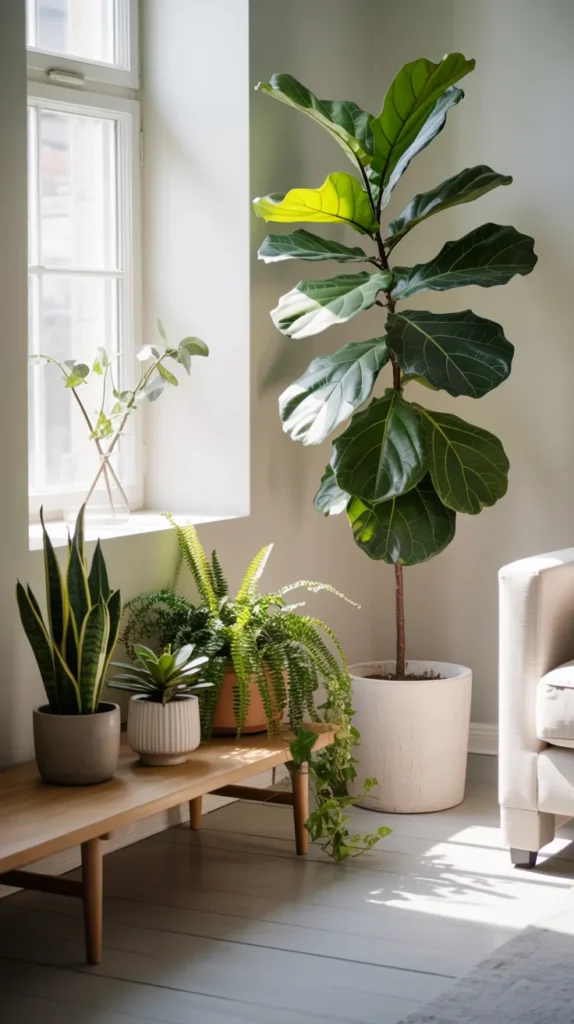
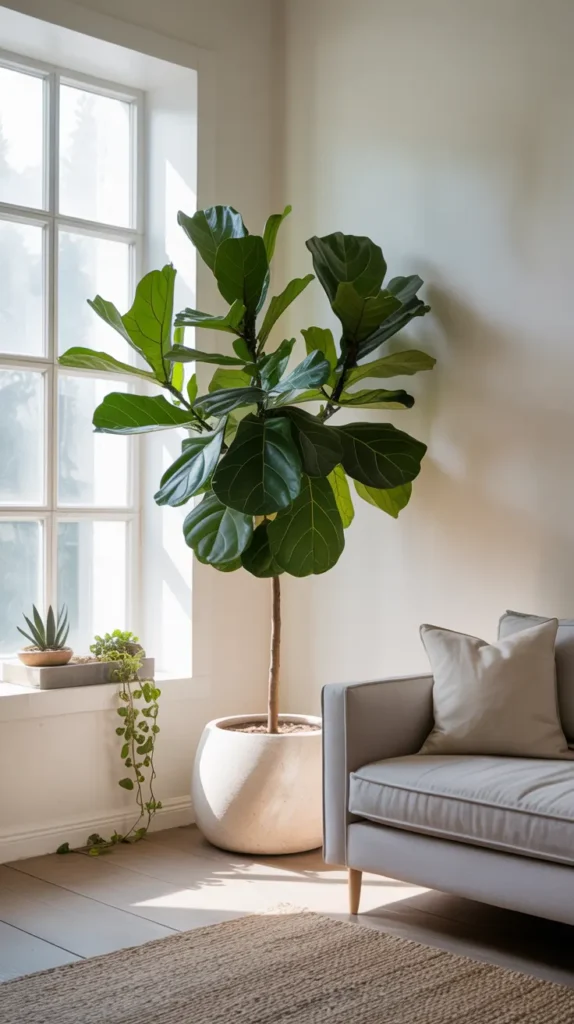
For a more authentic Nordic feel, incorporate smaller plants like delicate ferns or trailing ivy. These add a wild, natural element that contrasts beautifully with the controlled simplicity of the rest of the room.
Not blessed with a green thumb? No problem. Even the most dedicated plant killers can manage a few stems of eucalyptus in a simple vase, refreshed every couple of weeks.
Pulling It All Together: Cozy, Open Plan, and Light-Filled Spaces
The most successful Scandi living rooms combine all these elements into spaces that feel both designed and effortlessly livable. They’re cozy without being cluttered, minimal without feeling cold, and bright without feeling stark.
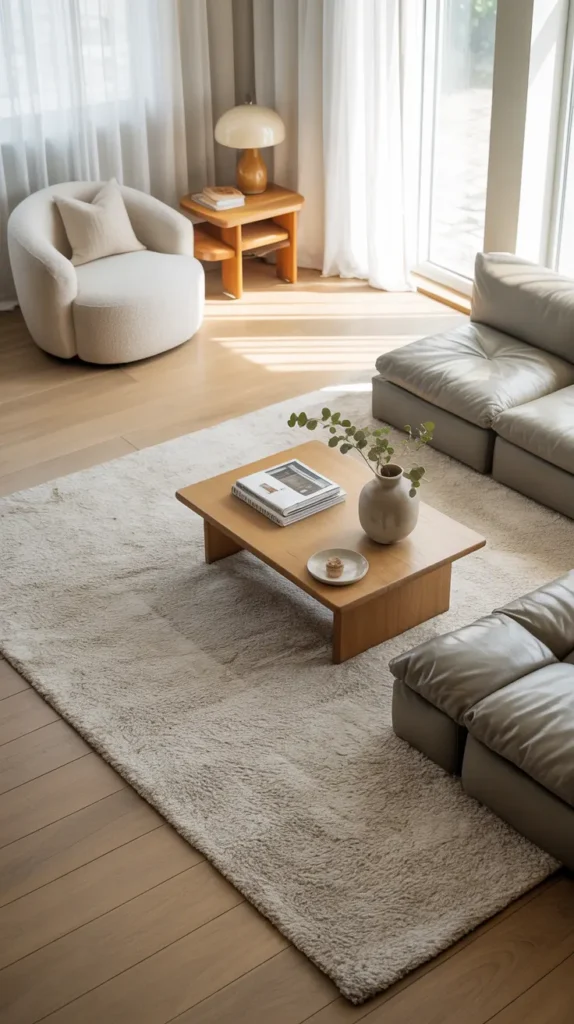
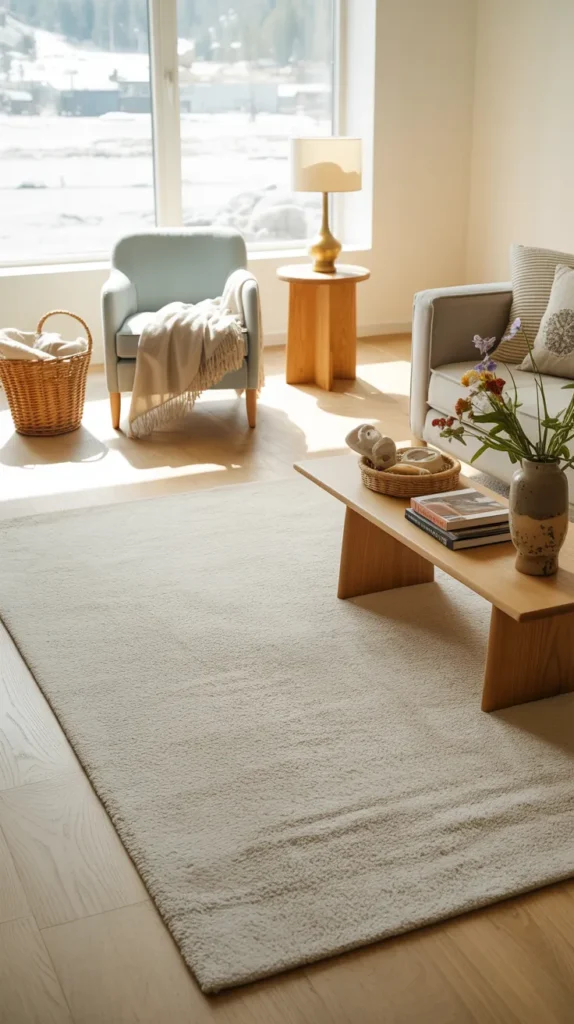
For maximum coziness, focus on creating intimate seating arrangements with plenty of soft textiles and warm lighting. A reading nook with a comfortable chair, small side table, and perfectly positioned lamp can become your favorite spot in the house.
In open-plan spaces, use rugs to define the living area and create visual borders without walls. Consistent flooring throughout helps maintain flow, while thoughtfully placed furniture creates natural dividers between functional zones.
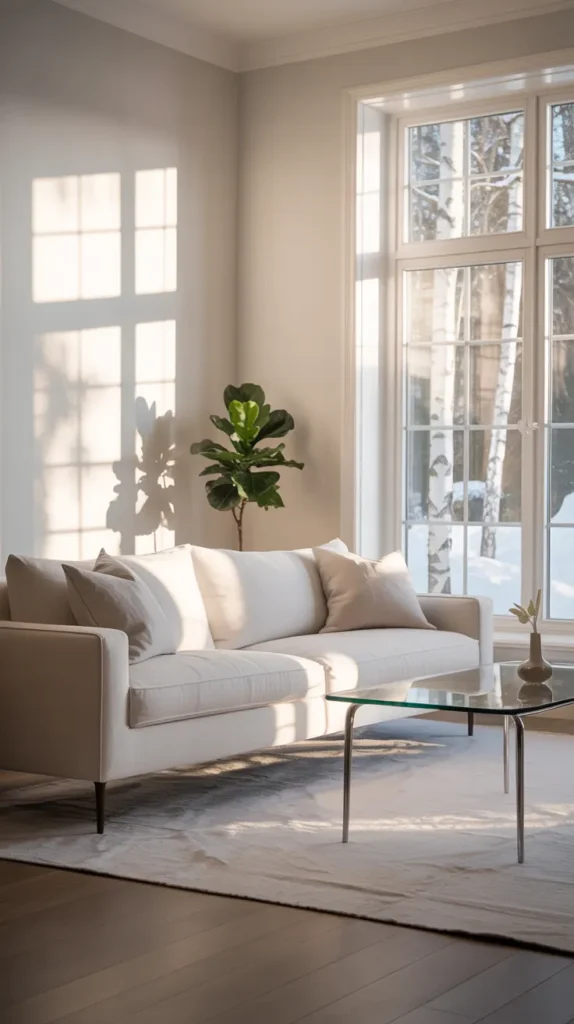
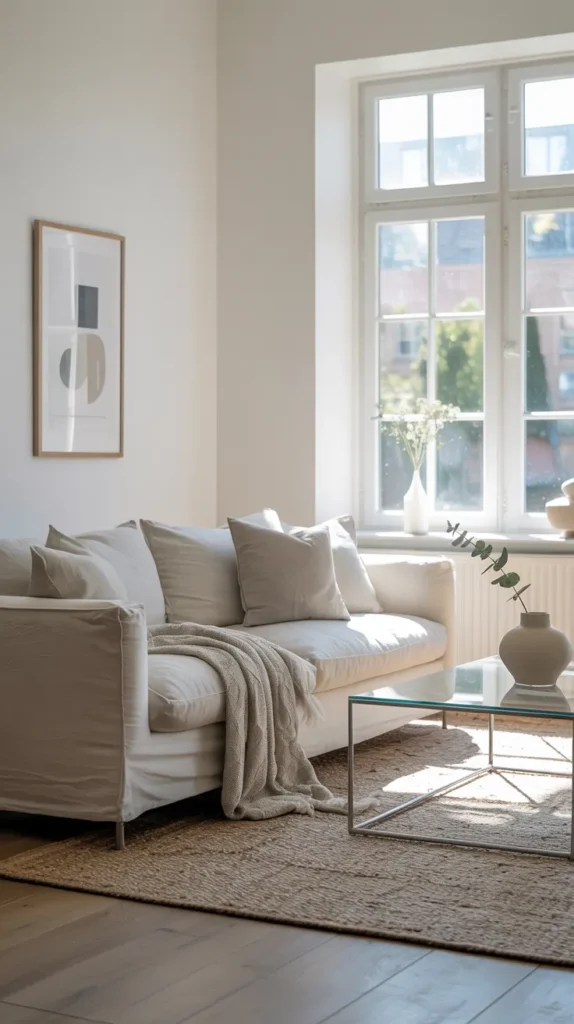
For those blessed with large windows and good natural light, keep window treatments minimal and furniture low-profile to maintain that airy feeling. If your space lacks natural light, maximize what you have with reflective surfaces and a strictly edited color palette.
The beauty of Scandinavian design is its adaptability. Whether you live in a tiny apartment or a spacious house, these principles can help you create a living room that feels both personal and pulled-together—a space that’s magazine-worthy but actually livable.
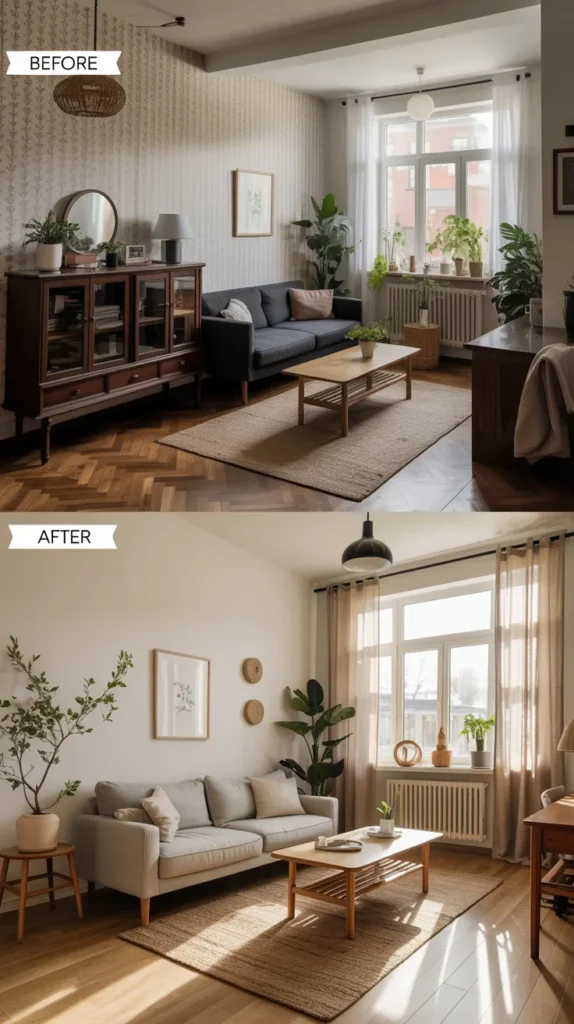
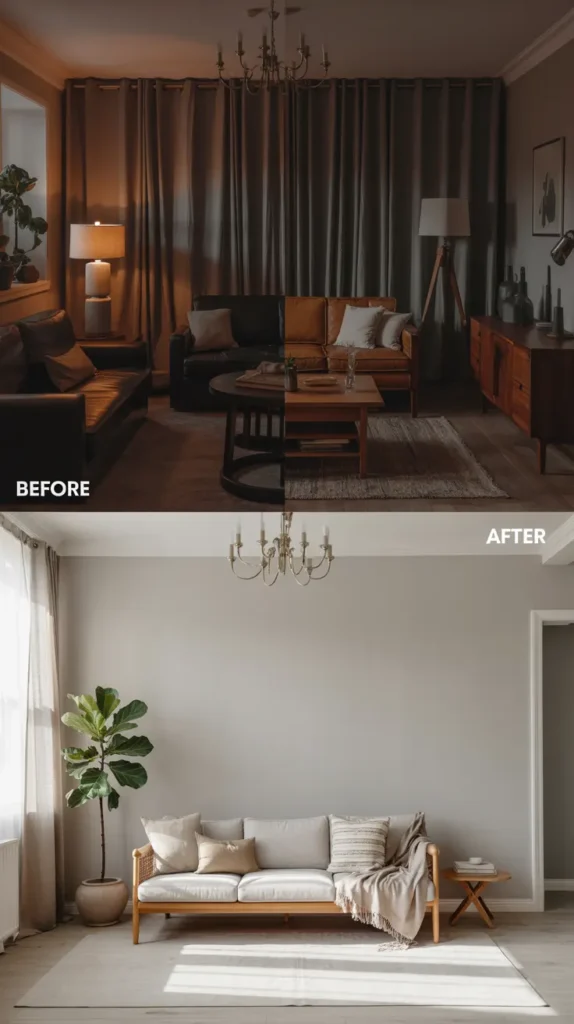
So go ahead and embrace your inner Scandinavian. Clear the clutter, invest in quality pieces you truly love, and make friends with the color white. Your calm, cozy, perfectly Scandi living room awaits. ✨

